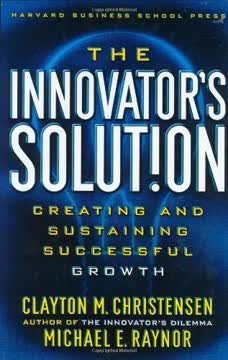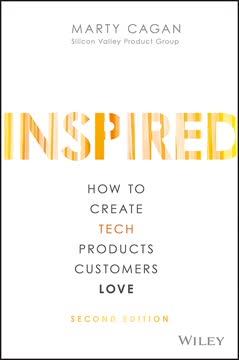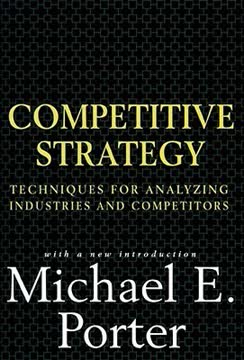重点摘要
1. 技术采纳生命周期:理解鸿沟
起初有市场……随后市场消失……然后市场重新出现。
技术采纳生命周期描述了不同群体随时间采用新技术的过程:
- 创新者:技术爱好者,率先尝试新产品
- 早期采用者:具远见者,看到战略潜力
- 早期大众:务实者,寻求经过验证的解决方案
- 后期大众:保守者,仅在必要时采纳
- 落后者:怀疑者,可能永远不会采纳
鸿沟是早期采用者与早期大众之间的关键断层,代表市场发展中的停滞期,许多高科技产品在此失败。跨越鸿沟是实现主流市场成功的关键,需从早期市场策略转向主流市场策略。
跨越鸿沟的主要挑战包括:
- 早期大众买家(务实者)价值观与早期采用者不同
- 缺乏务实者认可的参考案例和完整产品解决方案
- 需聚焦特定目标市场细分
- 无既有客户基础时难以形成市场势能
2. 确定目标客户:务实型买家
务实者对价格较为敏感。若无特别差异化,他们追求最佳性价比,但愿为顶级品质或特殊服务支付适度溢价。
务实型买家是跨越鸿沟、进入主流市场的关键。他们:
- 占市场主体(约三分之一)
- 风险规避,寻求经过验证的解决方案
- 重视同行务实者的推荐
- 偏好向市场领导者购买
吸引务实者应聚焦:
- 提供完整解决方案,而非单一产品
- 展示行业专长
- 提供强有力的客户支持与服务
- 建立成功实施的良好记录
跨越鸿沟的目标策略:
- 确定具有迫切需求的细分市场
- 成为该细分市场的无可争议领导者
- 以此成功为基础,拓展相邻细分市场
3. 构建完整产品:超越核心功能
上世纪九十年代末,微软是此效应最著名的典范和受益者。
完整产品理念对跨越鸿沟至关重要,包含:
- 通用产品:盒内实物
- 期望产品:最低有效配置
- 增强产品:最大化达成购买目标的可能性
- 潜在产品:成长与定制空间
务实买家要求完整解决方案,而非仅核心产品,通常需:
- 通过合作伙伴弥补产品空白
- 提供服务与支持确保成功实施
- 与现有系统和流程集成
- 行业定制与最佳实践应用
完整产品规划包括:
- 明确目标客户的购买动因
- 列出满足该动因所需的所有组成部分
- 确定自有资源与需合作伙伴提供的部分
- 制定交付完整解决方案的路线图
4. 成功定位:主导细分市场
早期市场与主流市场的最大区别在于,前者愿意承担拼凑完整产品的责任(以抢占先机),而后者则不愿意。
有效定位以跨越鸿沟需:
- 选择可主导的滩头细分市场
- 明确该细分市场内的目标客户
- 找出客户的购买动因
- 针对市场替代方案和产品替代方案进行定位
“诺曼底登陆”策略形象说明:
- 集中所有资源于单一突破点(目标细分市场)
- 在主流市场夺取滩头阵地
- 以此为基础向相邻细分市场扩展
关键定位要素:
- 命名与框定:技术准确的描述
- 目标客户与价值主张
- 竞争与差异化:突出优势
- 财务与未来展望:展示持续竞争力
5. 组建进攻力量:战略合作伙伴
高科技营销中,战略联盟与合作伙伴始终是热门话题。
合作伙伴对交付完整产品、跨越鸿沟至关重要,能:
- 弥补产品供应缺口
- 增强务实买家的信任度
- 加速市场渗透
可考虑的合作类型:
- 技术合作伙伴:互补产品或服务
- 分销合作伙伴:接触目标客户
- 实施合作伙伴:确保成功采纳
- 行业合作伙伴:提供领域专长
成功合作的关键:
- 聚焦战术性、完整产品联盟,而非泛泛战略联盟
- 确保各方互惠互利
- 从现有关系起步,稳步发展
- 大型合作伙伴自下而上,小型合作伙伴自上而下推进
6. 分销与定价:助力市场切入
超越初始细分市场的关键在于选择战略性目标市场细分。
分销策略应聚焦:
- 选择务实客户偏好的渠道
- 建立稳固的渠道合作关系
- 提供必要支持与激励
高科技产品常见分销渠道:
- 直销:适合复杂高价值解决方案
- 增值经销商(VAR):行业专用解决方案
- 在线电商:简单低价产品
- 混合模式:多渠道结合
跨越鸿沟的定价策略:
- 设定市场领导者水平价格,强化地位
- 初期给予渠道合作伙伴较高利润激励
- 随市场领导地位确立,灵活调整价格
7. 组织演进:从远见者到务实者
事实上,定居者不会取代开拓者的位置,而是占据开拓者未曾涉足或不愿选择的领域。
跨越鸿沟需组织变革:
- 关注点从远见客户转向务实客户
- 从产品导向转向市场导向
- 培养新角色与技能
关键转型:
- 销售:由远见销售转向解决方案销售
- 产品管理:由功能驱动转向市场驱动
- 市场营销:由技术布道转向完整产品营销
- 支持:由定制项目转向可扩展解决方案
转型挑战:
- 留住早期关键员工
- 制定新型薪酬体系
- 管理组织文化变革
8. 超越鸿沟:驾驭龙卷风与主街市场
完整产品研发驱动力来自市场,而非实验室。
龙卷风阶段代表主流市场的快速采纳:
- 高速增长与商品化特征
- 关注运营卓越与规模化
- 胜者往往占据主导市场份额
主街市场是成熟阶段:
- 增长放缓,市场细分完善
- 强调客户亲密度与细分专精
- 创新聚焦渐进改进
长期成功关键策略:
- 持续完善与扩展完整产品
- 构建涵盖不同生命周期阶段的产品组合
- 平衡创新与运营效率
- 维持稳固客户关系与市场洞察
研发演进:
- 从突破性创新转向完整产品研发
- 加强客户需求与市场反馈关注
- 建立持续改进与适应机制
最后更新日期:
FAQ
What's Crossing the Chasm about?
- High-Tech Marketing Focus: Crossing the Chasm by Geoffrey A. Moore explores the challenges of marketing disruptive high-tech products to mainstream customers.
- Chasm Concept: Introduces the "chasm," a gap between early adopters and the mainstream market, which is crucial for a product's success.
- Frameworks for Success: Provides strategies for companies to transition from early adopters to the early majority effectively.
Why should I read Crossing the Chasm?
- Practical Insights: Offers actionable marketing strategies for high-tech industries, valuable for entrepreneurs and marketers.
- Understanding Customer Segments: Helps readers comprehend the Technology Adoption Life Cycle, crucial for effective marketing.
- Proven Success: Widely used by companies to refine marketing strategies, demonstrating its relevance and effectiveness.
What are the key takeaways of Crossing the Chasm?
- Targeting Importance: Emphasizes targeting a specific niche market to successfully cross the chasm and build a strong reference base.
- Whole Product Concept: Stresses the need for a complete solution, including services and support, to meet customer expectations.
- Marketing as Warfare: Suggests assembling a strong "invasion force" of resources and strategies to penetrate the mainstream market.
What is the "chasm" in Crossing the Chasm?
- Gap Between Markets: The "chasm" is the gap between early adopters and the mainstream market, where many products fail.
- Transition Challenges: Involves overcoming the challenges of moving from early adopters to a larger, skeptical mainstream audience.
- Focus on Pragmatists: Highlights the need to understand pragmatists, who require proven solutions and are more risk-averse.
What is the Technology Adoption Life Cycle in Crossing the Chasm?
- Stages of Adoption: Categorizes consumers into innovators, early adopters, early majority, late majority, and laggards.
- Bell Curve Representation: Illustrates how different segments adopt technology at varying rates, with early adopters being quicker.
- Marketing Implications: Understanding this cycle helps tailor strategies to reach each segment, especially the early majority.
What is the "whole product" concept in Crossing the Chasm?
- Complete Solution: Refers to the complete solution needed by customers, including the core product and necessary services.
- Four Levels: Includes the generic, expected, augmented, and potential product levels to meet customer needs.
- Importance for Pragmatists: Essential for pragmatists who expect a complete solution without additional effort.
How can I effectively target a niche market according to Crossing the Chasm?
- Identify Pain Points: Start by identifying a specific pain point your product can address to gain traction.
- Focus Resources: Concentrate resources on achieving dominance in the niche market for efficient marketing.
- Leverage Word of Mouth: Use satisfied customers to spread the word within a tightly-knit community.
What strategies does Moore suggest for crossing the chasm?
- Target a Specific Niche: Focus on a niche market to establish dominance and build credibility among pragmatists.
- Develop a Whole Product Offering: Ensure your product is supported by necessary services and features for mainstream appeal.
- Leverage Partnerships: Collaborate with partners to enhance your product offering and credibility.
How does Crossing the Chasm apply to modern technology?
- Relevance to Current Trends: Principles remain relevant with rapid technological innovation and new market emergence.
- Application in Startups: Startups can use chasm-crossing strategies to navigate growth challenges and establish a foothold.
- Adapting to New Technologies: Understanding customer adoption dynamics and the whole product concept is vital for success.
How does Crossing the Chasm define different customer segments?
- Technology Enthusiasts: Early adopters excited about new technology, crucial for initial feedback and validation.
- Visionaries: Seek competitive advantages through innovative solutions, willing to invest in promising technologies.
- Pragmatists: Cautious and require evidence of reliability, influenced by peer recommendations, crucial for mainstream adoption.
What are the best quotes from Crossing the Chasm and what do they mean?
- "If you don’t know where you are going, you will wind up somewhere else.": Emphasizes the importance of having a clear target market and strategy.
- "Marketing is warfare—not wordfare.": Highlights the aggressive nature of marketing in competitive environments.
- "Whole products grow up around the market-leading products.": Underscores the significance of establishing a strong market presence.
What is the significance of pricing in Crossing the Chasm?
- Motivating Distribution Channels: Pricing should motivate channels to promote and sell the product, crucial during the chasm period.
- Market Leadership Pricing: Set prices at a market leader level to attract pragmatist buyers willing to pay a premium.
- Balancing Value and Cost: Balance perceived value with pricing to attract customers while ensuring adequate margins.
评论
《跨越鸿沟》是一本备受推崇的营销著作,聚焦于高科技行业中从早期采用者向主流客户转变所面临的挑战。读者普遍赞赏其对市场细分、定位以及跨越早期市场与主流市场“鸿沟”的战略洞见。尽管部分人认为内容略显陈旧,但许多创业者和产品经理仍视其为必读之作。书中的理念尤其适用于B2B场景。批评者指出其年代久远且缺乏数据驱动的方法,但大多数人一致认为,它为理解技术采纳生命周期提供了宝贵的框架。
Similar Books


















